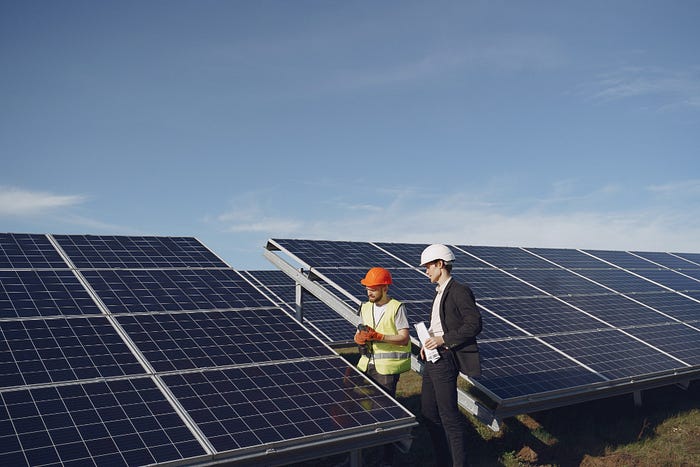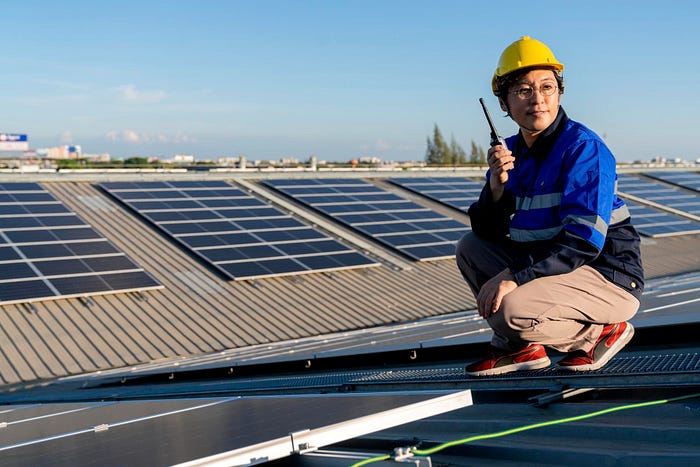The Impact of Rooftop Solar on Commercial and Industrial Enterprises
Commercial rooftop solar power, or installing solar panels on commercial and industrial buildings, has great potential to produce renewable energy and offers great benefits to business. Rooftop solar power is becoming an increasingly viable option for generating electricity as companies look to save costs and reduce environmental impact. In this blog, we discuss in the impact of solar panels in businesses and industries.
Introduction to Rooftop Solar
Solar energy, also known as commercial rooftop or rooftop solar energy in the industry, is used in warehouses, office buildings, shopping malls, hospitals, etc. It refers to the installation of solar panels on commercial buildings. and industrial facilities such as factories. Solar panels convert sunlight directly into electricity that can be used to power a building or facility or to sell electricity. Solar power is a distributed generation technology because, unlike large solar farms elsewhere, it produces electricity close to where it is used.
Commercial buildings and industrial facilities have large, open roof areas suitable for sunlight. Solar panels do not require any land area and can make the most of existing infrastructure to provide renewable energy. Generally, these buildings have electricity, heating, cooling, manufacturing, etc. They have high energy demands, making them excellent candidates for solar energy.

Cost savings through self-consumption
One of the biggest benefits of solar energy for companies is the savings in electricity costs through self-consumption. Solar energy is used to power most buildings or equipment needed during the day. This eliminates the need to purchase that electricity from a local electricity supplier.
Demand Reduction
In addition to energy savings, commercial and industrial equipment and rooftop solar can also provide significant savings on monthly electricity bills. The required amount is based on the maximum electricity consumption (kW/hour) measured over short periods during periods of high consumption. Solar panels help reduce peak consumption by charging some of the load while the panels are producing.
Revenue from Grid Sales
In addition to self-service, commercial and industrial facilities and rooftop solar can generate additional revenue by selling excess energy from local power plants. The solar radiation produced on the building surface must be sent to the electrical grid during the day.
This creates a new revenue stream for companies and industries. They become good sources of energy. Proceeds can be used to accelerate return on investment from installation costs of solar panels.
Environmental benefits and compatibility
By installing solar panels on commercial rooftop solar, companies can reduce their carbon footprint and become more sustainable. Switching to solar energy helps companies reduce greenhouse gas emissions by using off-grid energy from fossil fuels and solar power. This supports the goals of reducing emissions and introducing carbon taxes in many regions.
Solar panels also provide renewable energy certificates (RECs) for each MWh of electricity produced. Operators can sell or retain excess RECs to regional markets to meet the state’s renewable energy source (RPS) requirements. Many companies see the use of solar energy as an important part of their branding and marketing efforts to attract environmentally friendly customers and investors.

Other Economic Benefits
There are many more economic benefits of using solar energy on commercial and industrial surfaces:
- Tax Credit: Many states and the United States offer tax credits and deductions to encourage business investment in renewable energy. This significantly reduces initial overhead costs.
- Utility Benefits: Electric utilities often provide financing for on-site solar installation, increasing the economics of the project.
- Savings: Rooftop solar can increase property values and reduce energy costs by providing better financing options for construction or purchase.
- No transmission/distribution costs: Unlike remote solar farms, rooftop solar eliminates the costs associated with sending electricity long distances over networks.
- Flexibility: Solar roof plus battery storage provides backup power during off-grid conditions, improving operating performance especially for critical applications.
Challenges and solutions
While home solar offers many opportunities, some challenges need to be addressed for commercial and industrial use:
- Costs are higher than commercial solar — Large systems for large buildings/installations require more investment. But for most, paybacks are still well under 10 years.
- Roof obstructions — Not all roofs have enough free space for a good location. Creative designs and architectural adjustments help increase capacity.
- Connection Utility — List of approved applications and processes that can speed up connection. The combination of solar and community storage is promising.
- Maintenance Requirements — Different types of solar panels and equipment need regular repairs from time to time. Outsourced operations and maintenance contracts ensure long-term performance.
- Engineering Factors — Consideration should be given to issues such as snow cover, shade and wind loads in the design. Modern and innovative cards solve reliability problems.
Conclusion
Overall, commercial and industrial solar energy on the solar surface has great potential for industrial use through renewable generation. As new financing options and technology costs continue to fall, energy is increasingly becoming the main energy choice for sustainable businesses around the world. Solar energy will play a key role in powering commercial and industrial sectors in a low-carbon future.
Original Source: Published at medium.com on 24 July 2024.
.png)


Comments
Post a Comment